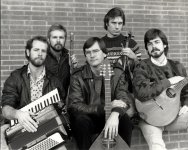Just caught up with this--Ha, picking only 3 would be nigh impossible! i've had super-nice bisonoric B/C bisonorics but have returned to CBA and PA for just about any genre. I listen to some selected classical stuff but have no interest in playing classical music on the accordion--it's really mostly world roots/trad/folk genres that grab me for accordion. I don't like big, heavy instruments and don't need or want one.
So, if we're talking wish lists, I'd like one of the few very nice Italian made 3-voice LMM CBAs that are more compact, like the dimensions of a 30/72 or 30/60 PA, and about 15-16 pounds. Saltarelle and Castagnari offer them and I'd love to have a Bourroche or Magica, but the prices are eye-watering. Most other Italian LMM CBAs are 96 bass, taller, and heavier, and I'm not going there. Perhaps I'll have to split my Italian CBAs in two and switch between a compact LM for tango/klezmer/Balkan and a compact MM for Irish/Scottish/musette/French swing. In PAs I like 30 and 26 key Italian MMs and 26-key Italian LMMs. Eventually I'll probably find my way to a very nice 30/72 LMM PA by Beltuna or Serenellini or such, but there's no rush.
In short, no yearnings for Golas, Prestige Leaders, or any of the Refrigerators. i get a kick out of reading people go on about them here, but you couldn't pay me to lug one around. I see it dawned on Phil Cunningham-- he has some very nice compact PAs.
I'd also like a very nice MMM 72 bass or 60 bass but not super wide for wetness. I like somewhere between 9 and 12 cents-ish.

